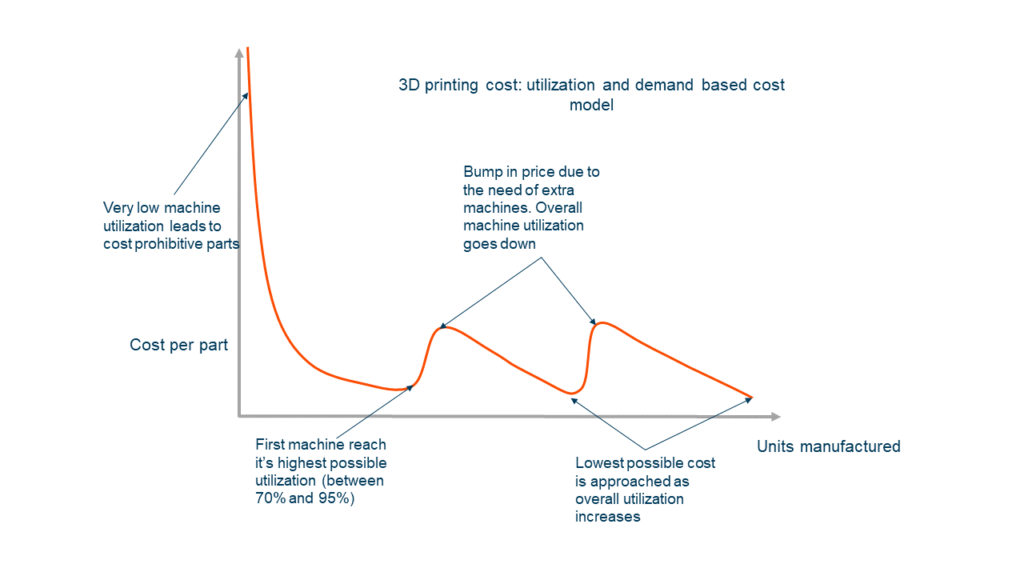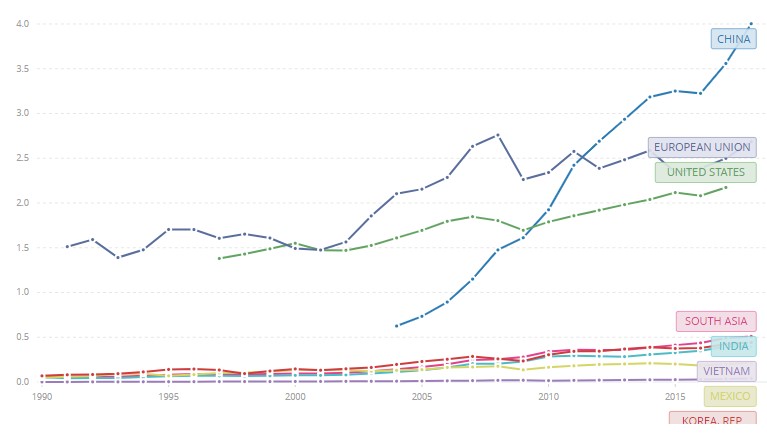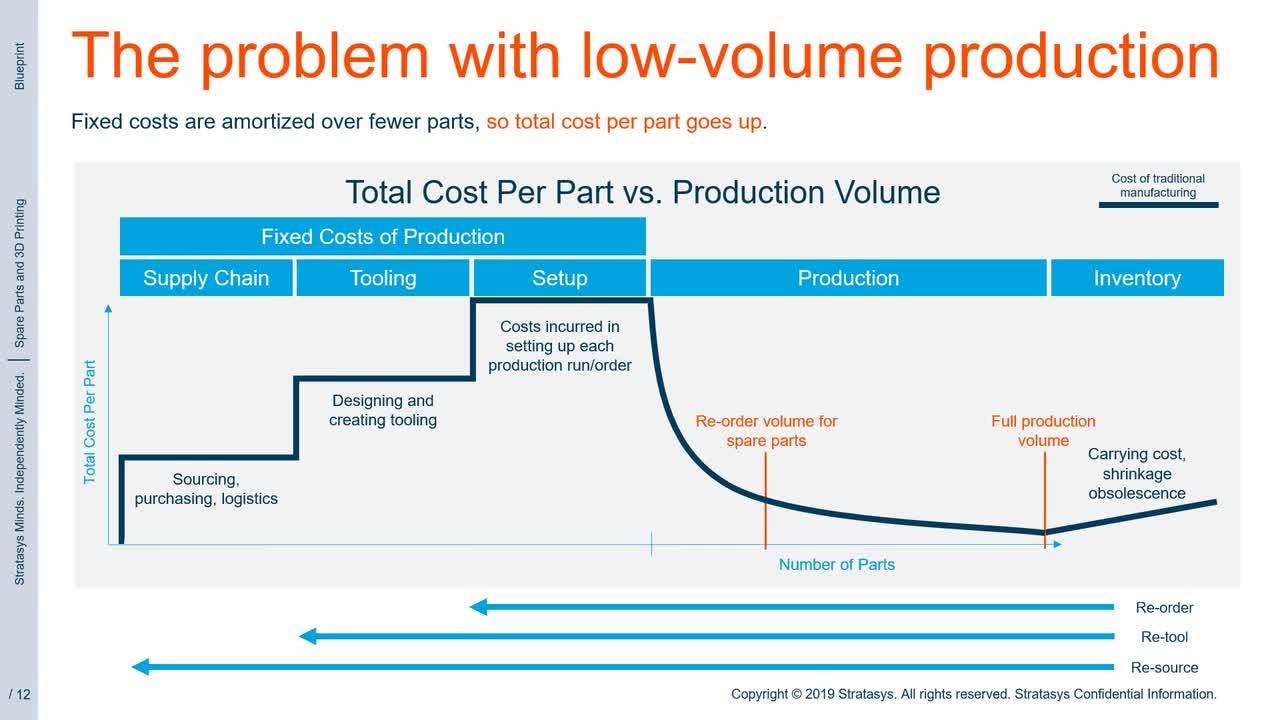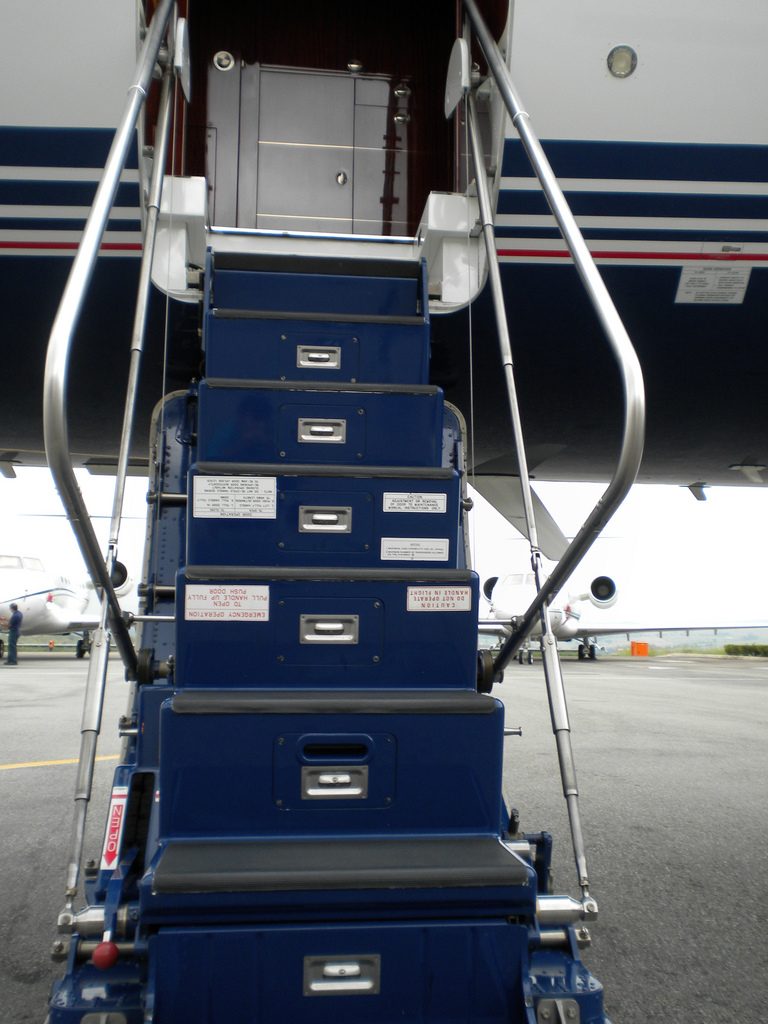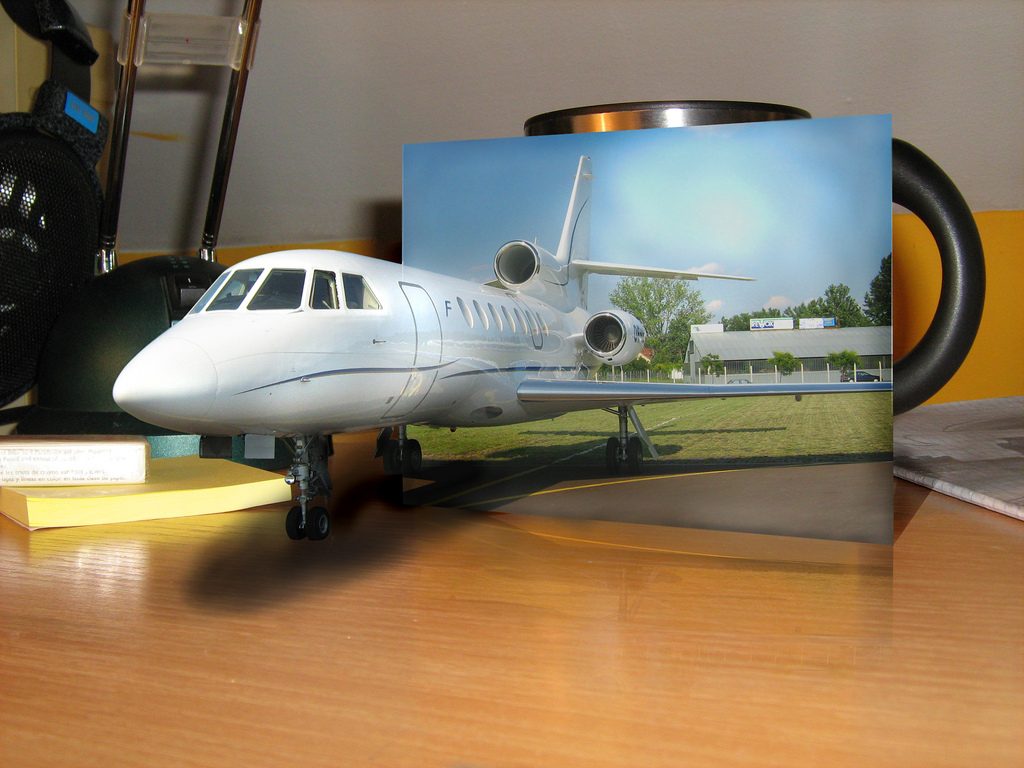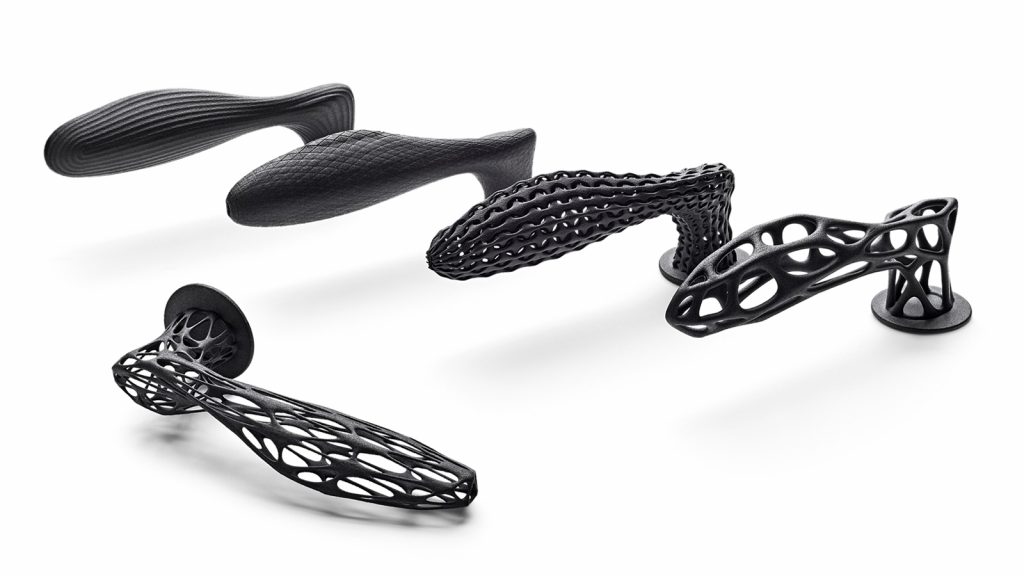Wipro is an $8 billion 164,000 employee Indian technology company. The company runs large outsourcing and technology implementation projects, and is one of the world’s largest IT firms. May may be surprised that Wirpro has a 3D printing arm. Moreover, Wipro 3D was set up in 2012. Wipro 3D has grown to be a metal 3D printing service provider that also offers 3D printing consulting, 3D printing engineering services, research services. The company is aiming to be a full spectrum player for 3D printing offering everything from sketch to the setting up of complete 3D printing service centers. We were very curious to see what Wipro 3D was up to and spoke to Ajay Parikh the VP and Business Head, Wipro 3D to find out more about the company’s plans.

Why is Wipro active in 3D Printing?
“Additive Manufacturing and related know-how is going to play a dominant role in how we conceive, design, produce and use objects. AM is going to push the limits of material science, and allow us to explore frontiers, never before imagined and disrupt manufacturing and supply chain processes globally. Wipro3D is Wipro’s initiative to be part of the future of manufacturing.
If we go by numbers, leading analysts had assessed the size of the additive manufacturing Market at USD 6 Bn in 2016, and expect it to grow to USD 16 -20 Bn in 2020 at a growth rate of 27%. They attribute this growth to the Metal AM market owing to an increase in its industrial applications. The growth of Metal AM is expected to be 42% with Aerospace, Automotive and Medical segments driving the growth.”
Is adoption on the rise?
“We assess adaption maturity of new tech essentially based on type and extent of end-use adaption, the ecosystem maturity and how rate at which the technology is evolving. If we look at the rate of enterprise adaption across the globe, it’s been pretty rapid in the last few years, metal 3D printing being the highlight. The entry and investments of large players like GE, HP in addition to entrenched incumbents such as EOS, Stratasys etc, further reinforces confidence. Besides a select set of full suite solution providers with global aspirations offer services ranging from Additive Consulting, Engineering, Manufacturing and R&D to turnkey solutions are driving up adaption.”
How do your consultants work with customers to help them get into 3D printing?
“Our Consultants study the client context, analyse opportunities and identify use cases that deliver the maximum benefit of Additive Manufacturing. We work with clients to design, redesign and adapt new and existing designs and geometries to 3D printing, work on material solutions, as well as end use prove outs, as well as process capability to reach regular and predictable use of additive manufacturing in their business operations. The central consideration in our engagement will customers is the business value that we can generate for the customer with 3d printing.”

Are you primarily focused on metal printing?
“Yes. Our focus is metal 3D printing and we see merit in offering complete suite of services such as Additive Consulting, Additive Product Engineering, Reverse Engineering, Series production of parts using Additive Manufacturing, R&D solutions as well as design, set up and operations of captive centres. We also offer process capability improvement programs. Given Wipro’s strength in business solutions, we can offer an integrated digital manufacturing solution including automation and iot use cases working closely with other businesses of Wipro.”
How do you work with customers in a design and engineering capacity?
“3D printing allows designers and engineers to completely rethink the way they approach product engineering. Given our strong background in product as well as additive engineering, we work with customers to analyse existing geometries, conceptualize products to take advantage of the freedom of design and manufacturing that 3d printing brings, and design the entire manufacturing process to assure repeatability and reliable , functional performance of the product in service conditions. These services are based on our deep understanding of various aspects of the technology. We thoroughly understand the deep interconnect between Additive Engineering, product engineering, materials science, pre-build, build and post-build strategies, to finally prove-out components that meet customers’ production and service condition needs. Design offerings are offered either as a standalone service, or as a part of the complete component realization solution.”

You also have 3D printing capacity in-house? In which technologies?
“We have a fully integrated Additive Manufacturing Centre in Bangalore, India catering to domestic and international customers, adhering to best practices and standards in Additive Manufacturing. We have a full-fledged design studio, best in class industrial grade metal 3D printers, a comprehensive post-processing shop as well as full-fledged materials characterization lab. While we currently use powder bed fusion as the default additive manufacturing technology, we are in the process of including various other technologies to suit specific industry applications. We are also in the process of manufacturing a purpose built machine to meet the demanding needs of customers.”
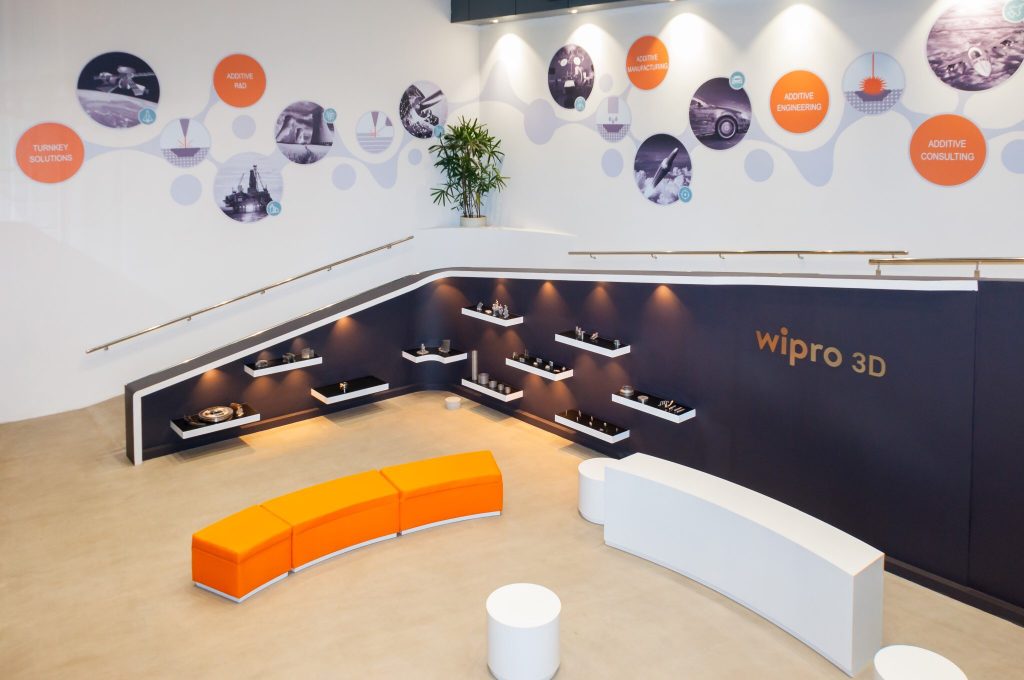
Do you focus on a particular market, vertical or application at all?
“Aerospace, Space, Defence, Energy, Automotive and specific applications in Healthcare are some of the sectors that we currently serve with a domain led focus.”
What are some examples of 3D printed parts that really add value?
“An appropriate selection of components and AM technology to address specific business case is important for a sustainable AM program within an enterprise. Wipro3D has a structured and systematic consulting framework that helps customers design an entire roadmap.
For a “successful” use case, the AM intervention needs either improve functional performance, improve manufacturing efficacy, reduce time to market or address supply chain issues.”
Wipro3D assists the space, aerospace and Défense with mission critical service ready components, that are proven out including components that are in space. We also offer industry For Healthcare too we offer optimized components that result in improve system design as well as performance. The Automotive industry is under constant pressure to release new products and Wipro 3D is helping compress their time to market with high fidelity prototypes for automobile and two-wheeler manufacturers in various subsystems. The Injection Moulding industry has benefitted from the freedom of design and manufacture afforded by AM with the freedom of design that AM offers.”
In which industries do you see 3D printing becoming strong in the immediate future?
“As you know, Aerospace, Space, Defence and Healthcare are at the forefront of AM adoption We feel major growth in usage of AM will also come from Automotive, Oil & Gas, and Industrial sectors employing different variants of metal AM technologies.”
Do you think that clusters of desktop systems will compete with industrial systems in manufacturing?
“Both systems have unique and mutually exclusive use cases and as such we see them coexisting.”
Do you think that one particular technology will win out over others?
All 3D printing technologies will co-exist with each other given the variety of applications, engineering needs and service conditions across industries.
What is Wipro’s ambition in 3D printing?
“We aim to be among the leading global full suite players in metal and advanced materials additive manufacturing solutions.”
What would be your top tips to a large company wanting to explore 3D printing? What are some of the roadblocks for manufacturers when switching to 3D printing?
“It is critical to find the right applications within the enterprise and identify the right type of additive manufacturing technology to create proper use and business cases. Enterprises need to work with the right Additive Manufacturing solution provider, which whom the enterprise can co-create and execute a long term adaption roadmap A systematic adaption roadmap is key. A good AM solution provider can make a big difference. Another aspect is executive sponsorship. If this is not on the board’s agenda, there is pretty good chance it’s going to be limited to prototyping. Moreover, you need high resilience. When it comes to enterprise adaption, certainly Return on Capital Employed, Utilization, Service life, comparison to conventionally manufactured components in terms of mechanical properties are top of the mind considerations. As in any case, early adopters face a steep learning curve, but one which is to come in handy, as the technology matures and use cases grow. Start now, with a strong business outcome objective, ideally working with a strategic solutions partner.







